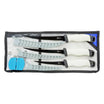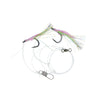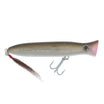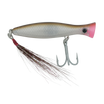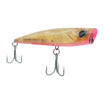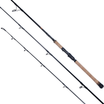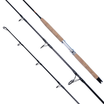Cape Cod Topwater Popper Bonito Fishing
Time Interval: 00:00 - 06:47
Introduction
Brief Overview: This video captures an exciting fishing adventure off the coast of Westport, Massachusetts, where anglers target Bonito using topwater poppers. The action takes place in late July, during a period of intense fish activity, making it a prime time for surface fishing.
Approach

Positioning Strategy: The anglers strategically position their boat near feeding schools of Bonito, without running directly into them. They use a controlled approach, allowing the wind to push the boat alongside the school, maximizing their chances of multiple successful casts without spooking the fish.
Gear
Rod and Reel Setup: The recommended setup for this type of fishing includes a medium-heavy spinning rod paired with a high-speed reel. This setup provides the power needed to handle aggressive Bonito and the speed required to retrieve lures quickly.
Line Selection: A 20-30 lb braided line is ideal for this fishing scenario. Braided line offers sensitivity and strength, which is crucial for detecting strikes and handling the power of Bonito in fast-moving waters.
Lure and Bait Choices: The anglers use the Hogy mini popper, a surface lure designed to create a lot of noise and commotion in the water. The bright colors and aggressive popping action of this lure are key to attracting Bonito, especially in choppy conditions.
Technique

Casting and Retrieving: The anglers employ a steady, rhythmic popping technique with their lures. Instead of rapid pops, they focus on creating big splashes and loud sounds, which draw the fish to the surface. Casting into active feeds and retrieving through them is the main strategy.
Hook Setting and Playing the Fish: Quick, firm hook sets are essential when a Bonito strikes. Once hooked, the fish are played carefully, using the rod’s power and the reel’s drag to tire them out while minimizing stress on the fish.
Environmental Factors
Wind Conditions: The day’s choppy and windy conditions make it crucial to cast accurately and control the boat’s position relative to the fish. The wind is used advantageously to drift the boat into optimal casting positions.
Tide and Water Conditions: The anglers note that the presence of small baitfish and consistent feeding activity suggests that the tide is favorable for Bonito fishing. Adjustments are made as the tide shifts to stay on active schools.
Weather Considerations: Overcast skies and occasional sunlight influence fish behavior, making it important to observe changes and adjust lure presentation accordingly.
Situational Factors
Reading the Water: The anglers constantly scan for surface activity, such as splashes or baitfish jumping, which indicate the presence of Bonito. Recognizing these signs allows them to position their boat effectively and cast accurately into feeding schools.
Using Electronics: Fish finders and GPS are used to locate deeper schools of fish and track their movements. This technology helps in planning the next move and ensuring that the anglers stay on top of the action.
Fish Care and Conservation
Handling and Release Tips: The anglers use the Hogy Hook One platform, which features a single hook on the lure to minimize injury to the fish. Careful handling ensures that fish can be released with minimal harm, contributing to sustainable fishing practices.
Conservation Practices: Throughout the video, there is a strong emphasis on catch-and-release fishing, with a focus on minimizing harm to the fish. The use of single hooks and proper handling techniques reflects a commitment to conservation.
Summary
Key Takeaways: Successful Bonito fishing requires the right gear, careful positioning, and the ability to read environmental cues. The use of topwater poppers in choppy conditions, combined with ethical fishing practices, leads to an exciting and responsible fishing experience.
Insights and Observations: The video highlights the importance of adapting to conditions, such as wind and tide, and underscores the effectiveness of conservation-oriented fishing gear in ensuring the long-term health of fish populations.




















